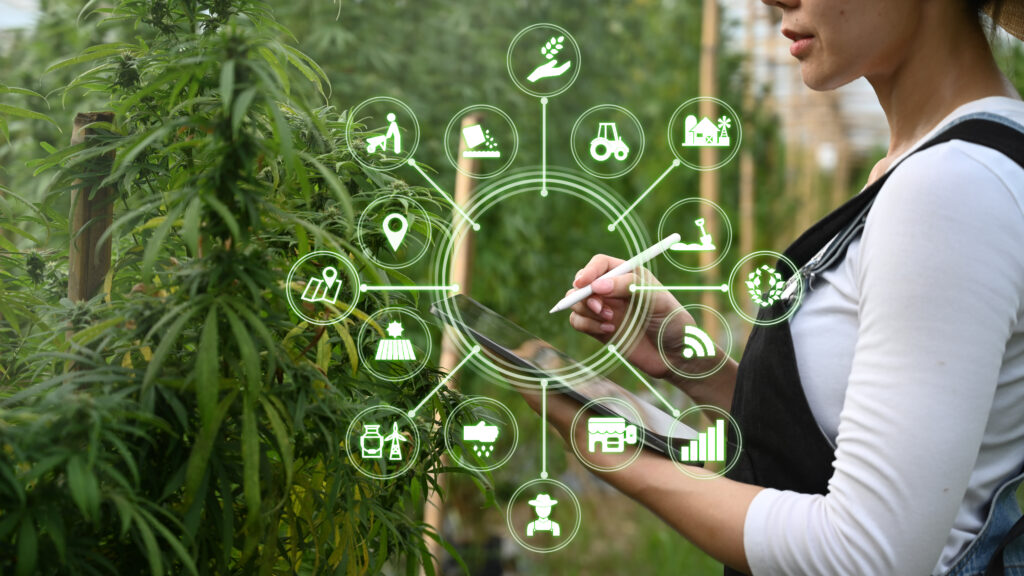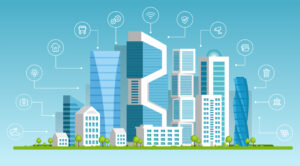As a farmer in the 21st century, you stand at the forefront of a technological revolution that promises to transform agriculture as we know it. With the rise of the Internet of Things (IoT), your farm may soon be filled with connected sensors gathering data to optimize every aspect of production. This could allow you to increase yields, reduce waste, and farm more sustainably through precision techniques tailored to local conditions. But how exactly can IoT enable smart farming? And what are the key technologies driving this change? This article explores the tremendous potential of Agricultural IoT, from remote crop monitoring to automated irrigation systems. You will learn how data-driven, hyperconnected farms can enhance productivity and food security in a more environmentally responsible manner. Join us as we delve into the numerous applications of IoT set to disrupt modern agriculture.
Agricultural IoT: Enhancing Productivity Through Precision Farming
Precision farming leverages IoT technologies like sensors, GPS, and data analytics to optimize crop yields. Moisture and nutrient sensors provide real-time data to ensure optimal soil conditions for plant growth. GPS and geo-mapping help determine the precise amount of fertilizer or pesticide to apply based on location.
Optimizing Inputs
Sensors monitor soil moisture, nutrient levels, and pH to determine the exact amount of water and fertilizer needed. Precision input application reduces waste and environmental impact while improving crop health and yields. Automated irrigation systems deliver water on an as-needed basis. Based on GPS mapping, variable-rate technology applies fertilizers and pesticides precisely where they’re needed.
Maximizing Yields
By monitoring crop growth and health at a granular level, precision farming helps farmers maximize yields. Sensors detect crop stress or disease outbreaks early, allowing for targeted interventions. Mapping crop yields across fields identifies low-productivity areas to optimize for future seasons. Analytics provide insights into how inputs, weather events, and farming practices impact crop development.
Improving Farm Management
- The data and insights generated through precision farming enable better farm management decisions. Tracking inputs, crop development, weather, and yields helps evaluate the effectiveness of practices, choose the most productive seed and crop varieties, and make data-driven plans for each growing season. Precision farming makes the farm more transparent and manageable through detailed monitoring and measurement.
In summary, precision farming enabled by IoT technologies helps address the critical challenge of food security through environmentally sustainable means. Precision farming improves agricultural productivity by optimizing resource use, maximizing crop yields, and empowering data-driven farm management to help meet the world’s growing food demands.
IoT-Based Sustainable Agriculture for Improved Food Security
1. Precision Farming
Precision farming harnesses IoT technologies like sensors, GPS, satellite imagery, and AI to pinpoint field variations and adapt farming practices to maximize yields. Farmers can optimize planting, watering, and fertilizer application for specific areas by monitoring soil conditions, moisture levels, and crop health. Precision farming has increased crop yields by up to 60% while reducing water and chemical usage by up to 30%.
2. Supply Chain Traceability
IoT-enabled supply chain traceability utilizes sensors, RFID tags, and blockchain to track the provenance and journey of food from farm to fork. Sensors monitor crop growth conditions at the agricultural stage, and RFID tags track harvest details. This data is recorded on an immutable blockchain, providing transparency into the source and handling of goods. Traceability systems give consumers insight into where their food comes from and how it was produced, building trust in the supply chain. For farmers and food companies, traceability data enables targeted recalls, reduces waste, and proves sustainability and organic claims.
3. Automation and Robotics
Advancing robotics and automation will transform agriculture, performing physical tasks like planting, weeding, and harvesting more efficiently and consistently. Autonomous tractors can plow fields 24 hours a day without breaks. Robotic arms can precisely pick ripe produce while computer vision systems determine optimal harvest times. Automation will make farming less labor-intensive, allowing farmers to focus on strategic tasks. However, automation may significantly impact agricultural employment, requiring retraining programs to facilitate the transition.
In summary, IoT-enabled solutions like precision farming, supply chain traceability, and automation enhance agricultural productivity, sustainability, and food security worldwide. While posing some economic challenges, smart farming has the potential to meet the food demands of our growing population if implemented responsibly. With IoT, agriculture is experiencing a technological revolution that will shape the future of how we grow and distribute our food.
How IoT Is Transforming the Agricultural Supply Chain
Precision Farming IoT enables precision farming techniques like targeted seeding, precision irrigation, and variable rate technology (VRT) application of fertilizers and pesticides. Sensors monitor soil conditions, crop growth, and microclimate data, which are analyzed to provide insights for optimizing crop yields. Farmers can apply inputs only where and when needed, reducing costs and environmental impact.
Automated Harvesting
- IoT-enabled automated harvesting systems use sensors, robotics, and AI to pick ripe produce at optimal times. Automated harvesting of specialty crops like strawberries and apples is already commercially viable, helping address labor shortages. The data collected also provides insights into optimizing the next harvest.
Supply Chain Visibility
- IoT provides end-to-end visibility into the agricultural supply chain, from seed to shelf. Sensors, blockchain, and AI track the location and conditions of crops, livestock, and food products in real-time, ensuring freshness, safety, and provenance. Retailers and consumers gain access to the origin and journey of their food. Farmers and processors can optimize logistics, reduce waste, and prove sustainability certifications.
Data-Driven Farm Management
- The data from IoT sensors, robots, and supply chain systems are analyzed using AI and machine learning to provide predictive insights for farmers. Analytics can forecast crop yields, optimize irrigation and fertilizer needs, predict pest and disease outbreaks, schedule harvesting, and project market prices to help farmers maximize efficiency and profits sustainably. IoT-enabled data-driven farm management is vital to improving productivity and meeting the food demands of a growing global population.
- In summary, IoT enables a transformation in agriculture through precision farming techniques, automated harvesting, supply chain visibility, and data-driven farm management. By optimizing productivity, sustainability, and food safety, IoT promises to help address critical challenges around food security, environmental impact, and labor shortages in the agricultural sector.
Smart Farming Solutions to Optimise Yields

Precision Agriculture
Precision agriculture employs advanced technologies like sensors, robots, drones, and AI to optimize farming operations. Sensors and drones can monitor crop and soil conditions, enabling targeted interventions like precision irrigation, fertilization, and pest control. Robots and autonomous equipment can handle tedious tasks like weeding, pruning, and harvesting. Precision agriculture can boost crop yields and farm productivity by optimizing resource usage.
Data-Driven Insights
The data collected from sensors and monitoring equipment provides valuable insights to help farmers make better decisions. Soil moisture sensors can determine the optimal time to irrigate. Aerial imaging from drones can detect crop diseases and infestations early. Weather data can predict the best time to plant and harvest. Analyzing this data with AI and machine learning provides predictive insights and recommendations tailored to a farm’s unique conditions. These data-driven insights enable a more proactive approach to managing crops.
Supply Chain Traceability
IoT technologies like RFID tags, sensors, and blockchain enable end-to-end traceability of agricultural products through the supply chain. RFID tags and sensors can track the location and condition of crops from harvest through transport and storage. Blockchain provides an immutable record of the provenance and journey of food products. Supply chain traceability increases transparency, optimizes logistics, minimizes waste, and improves food safety. For consumers, it builds confidence in the origin and quality of the food they purchase.
In summary, smart farming solutions incorporating IoT, data analytics, and automation help address the urgent need for increased agricultural productivity to meet the food demands of a growing global population. By optimizing yields, improving sustainability, and building a transparent supply chain, smart farming is transforming agriculture for the 21st century.
IoT-Enabled Smart Farming Innovations for Higher Productivity
i. Precision Agriculture
Precision agriculture utilizes IoT sensors and data analytics to optimize resource usage and increase crop yields. Soil moisture sensors and aerial drones provide real-time data on crop and soil conditions, enabling targeted irrigation and fertilizer application. This reduces waste and environmental impact while improving productivity.
ii. Automated Irrigation
IoT-connected irrigation systems automatically monitor soil moisture and weather conditions to determine optimal watering schedules for maximum crop growth. Smart valves and pumps then deliver the right amount of water at the optimal time. Studies show that automated irrigation can reduce water usage by up to 90% while increasing crop yields by over 60%.
iii. Predictive Analytics
IoT sensors generate vast volumes of data on every crop and soil health aspect. Using predictive analytics, farmers can gain valuable insights into maximizing future harvests. Machine learning algorithms detect complex patterns in the data to forecast the outcomes of different planting, fertilizing, or harvesting strategies. Farmers can then choose the approach most likely to optimize productivity for their unique land and conditions.
iv. Traceability and Food Safety
IoT enables end-to-end production traceability, from farm to fork, using tools like RFID tags, GPS, and blockchain. At the farm, IoT sensors monitor conditions that impact food safety, like temperature, humidity, and soil contaminants. Tracking data is then logged on an immutable blockchain, giving regulators and consumers visibility into the provenance and safety of their food. Complete traceability builds trust, reduces waste, and ensures unsafe produce does not enter the supply chain.
In summary, IoT-driven smart-farming solutions enhance agricultural productivity through precision resource management, predictive analytics, and supply chain optimization. By harnessing the power of connected sensors and big data, farmers worldwide can sustainably increase crop yields to meet the food demands of a growing population.
The Future of Agricultural IoT: Innovations for Smarter, More Sustainable Farming
Precision Farming
IoT technologies enable precision farming through the use of sensors and positioning systems. Sensors monitor crop and soil conditions, and global positioning systems (GPS) track the exact location of fields and crops. By closely monitoring conditions and applying treatments only where needed, farmers can optimize resource usage and yields. Precision farming reduces costs and environmental impact through the targeted use of inputs like water, fertilizers, and pesticides.
Predictive Analytics
IoT data from sensors provides historical information farmers can use to gain insights and predict future outcomes. Predictive analytics use machine learning algorithms and statistical modeling to detect patterns in data that can forecast events like crop yields, pest infestations, and climate impacts. Predictive insights enable proactive measures to mitigate risks, improve decision-making, and stabilize crop production.
Supply Chain Visibility
IoT technologies improve supply chain visibility through traceability solutions like RFID tags, GPS, and blockchain. RFID tags and GPS track the location and conditions of crops, animals, and agricultural products along the supply chain. Blockchain creates a digital record of transactions, providing transparency into the origin and handling of goods. Enhanced visibility and traceability enable compliance with regulations, reduce waste and fraud, and give consumers information about the food supply.
Automation
Many agricultural tasks are time-consuming, repetitive, and labor-intensive. IoT-enabled automation, robotics, and drones can take over these mundane jobs, reducing costs and improving productivity. Automated equipment controlled by IoT systems can plant, weed, fertilize, irrigate, and harvest farms with minimal human intervention. Automation also improves the consistency and accuracy of agricultural processes.
Agricultural IoT and precision technologies will transform farming through data-driven innovations, improving productivity, sustainability, and food security worldwide. With more innovative and more efficient food systems, IoT can help meet the challenges of feeding a growing global population.
Key Takeaways
In these uncertain times, adopting smart-farming solutions enabled by agricultural IoT technologies can help ensure our collective food security. By harnessing the power of data and connectivity, farmers have an unprecedented opportunity to increase yields, reduce waste, and make their operations more efficient and sustainable. The innovations highlighted in this article are just the beginning of the next agricultural revolution. All stakeholders – from farmers to consumers – stand to benefit. Moving forward, we must continue to develop policies and partnerships that foster the responsible adoption of these exciting new technologies across the entire food system. If implemented thoughtfully, they can help feed a growing world population while protecting our planet.
More Stories
Pony.ai Accelerates Toward Profitability with Strategic Fleet Expansion and Cost Optimization
Pony.ai is making strategic moves to accelerate its path toward profitability. As you navigate the complexities of this cutting-edge industry, it is crucial to understand how this Chinese company positions itself for success.
Alibaba’s $53 Billion AI and Cloud Investment: A Strategic Leap into the Future
As technology rapidly evolves, Alibaba’s $53 billion investment in AI and cloud computing deserves your full attention. This strategic move puts the Chinese e-commerce giant at the leading edge of a technological revolution.
CrowdStrike Elevates Cloud Defense with Real-Time AWS IAM Identity Center Threat Detection
As you navigate the complex landscape of cloud security, staying ahead of evolving threats is paramount. CrowdStrike’s latest enhancement to its Falcon Cloud Security platform introduces real-time threat detection for AWS IAM Identity Center, elevating your defense capabilities to new heights.
Reels Remix: Instagram’s Blend Turns DMs into Shared Discovery Zones
Have you ever wished you could explore Instagram Reels with your friends, discovering content that appeals to both of your interests?
ASUS AiCloud Bug Exposes Home Networks to Remote Attacks
Are you aware that your home network could be at risk? A recently discovered vulnerability in ASUS AiCloud-enabled routers has sent shockwaves through the cybersecurity community. This critical flaw, identified as CVE-2025-2492, exposes your network to potential remote attacks, allowing unauthorized access to your devices.
Samsung SmartThings Evolves: AI-Powered Automation and Ambient Sensing Redefine the Smart Home Experience
Samsung SmartThings redefines your connected living experience. With the introduction of AI-powered automation and ambient sensing capabilities, SmartThings is elevating home management to unprecedented levels of sophistication and convenience.


